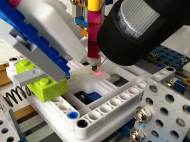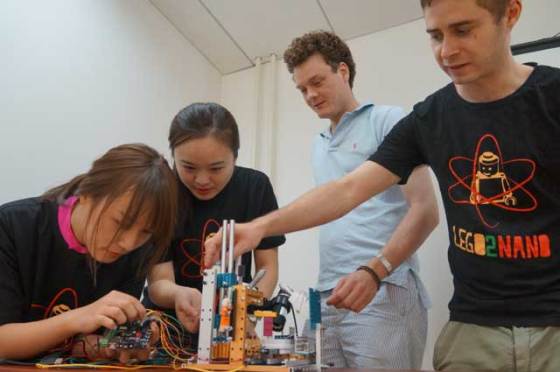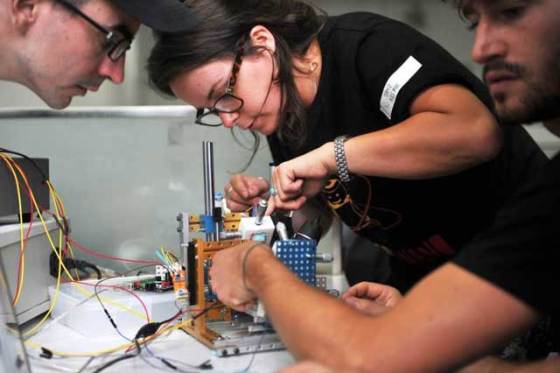Building Atomic Force Microscope with 3D printing, electronics and LEGO
 32 young scientists and designers from China and the UK took a challenge to take a week to develop a new type of low-cost scanning probe microscope, powerful enough to study the nano world. The world’s first low cost Atomic Force Microscope (AFM) has been developed in Beijing by an international group of students using LEGO, low cost electronics and 3D printing.
32 young scientists and designers from China and the UK took a challenge to take a week to develop a new type of low-cost scanning probe microscope, powerful enough to study the nano world. The world’s first low cost Atomic Force Microscope (AFM) has been developed in Beijing by an international group of students using LEGO, low cost electronics and 3D printing.
Gathered by the LEGO Foundation under the LEGO2NANO project, experienced makers and scientists collaborated with young innovators from Tsinghua University, Peking University and University College London (UCL) in order to build a low cost and effective AFM – a device capable to enlarge objects only a millionth of a millimeter in size.
The Summer School project involved talks and hands-on advice from design, making, hacking, crowd sourcing, LEGO and nanotechnology experts, as well as consultations with Chinese high-school students, and visits to Beijing’s make/hackerspaces and huge electronics markets.
The goal to lower the cost of AFM constrained the teams to build a functional nanoscope using only LEGO, Arduino, inexpensive 3D printable parts and local consumer electronics.
The UCL team took just five days to demonstrate the scanning functionality of their AFM, earning them the award for Best Technical Design. The teams involved in the event will now return to their universities with the goal of continuing their AFM developments and improving the nanoscale resolution of their designs.
Research-grade AFMs typically cost over $95,000, and the newly designed low-cost version could cost around $480 to produce, making them far more affordable and accessible.
“Low-cost scientific instrumentation is not just useful in high schools, it can be a huge enabler for hospitals and clinics in developing countries. That’s why novel initiatives like LEGO2NANO are so important”, said Professor Gabriel Aeppli, director of the London Centre for Nanotechnology at UCL.
Making development of specific open source AFMs that can be built by high school students around the world could boost the amount of collected data that could be shared and compared – the start of an exciting citizen science project.
After the exciting experimental week and a nail-biting race to the finish at Tsinghua University, Institute of Making members and their new colleagues in China are now taking the project forward in the MakeSpace and at London Centre for Nanotechnology.











Leave your response!